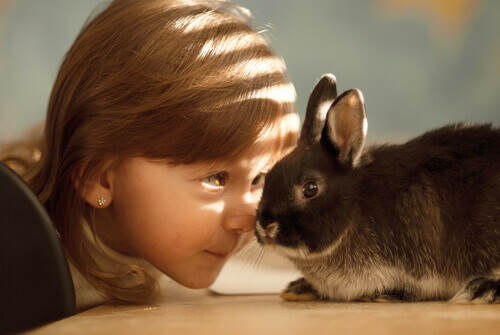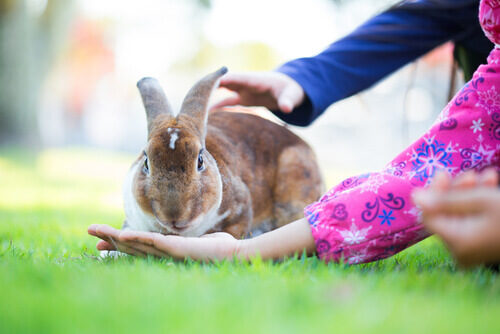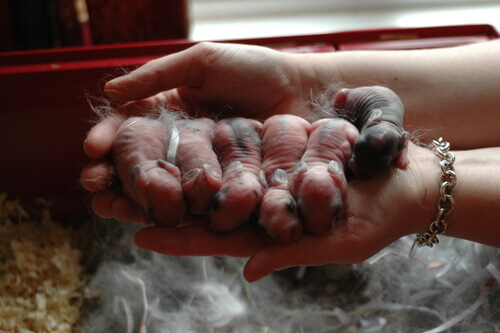Breeding Rabbits and Taking Care of Their Young

Rabbits are cute and great as pets so some people adopt them, while others prefer to get into the art of breeding them. You’ll like this article if you’re thinking about starting your own rabbit “factory.”
Breeding rabbits and subsequent care
There are many things you must learn if you want to breed rabbits, as it takes more than simply a suitable environment where they’ll be able to move around in an appropriate climate. Continue reading to find out more about this idea.
How to identify a pregnant rabbit
At first, that is, while her belly is growing, it’s hard to determine whether a doe is pregnant or not with the naked eye. So, use her behavior to determine it. There’ll be several symptoms, for example, she may become more surly, drink more water, have swollen breasts, and even pull the hair off her belly.
This last one will leave obvious bald patches on their body, but worry not, they use the hair to make the nest for their future babies.
Care
In reality, pregnant rabbits don’t require any special care. These animals like their routine and will even get stressed when it’s disturbed. As you can imagine, a momma-to-be will prefer the usual treatment, as if nothing has changed.
However, she’ll probably need help moving around and, above all, a lot of cuddles when the pregnancy is at a more advanced stage.

Does breeding rabbits require a nest?
The answer is no, as the mother usually takes care of everything. Not only will she choose the place she considers ideal for her young, but she’ll also gather the necessary material to build it on her own.
Where do they get the material? Well, pretty much from anything they find around their home: socks, kitchen paper, rags, and any other such object that might be useful for this purpose.
How to handle labor
The most important thing during labor is not to stress the mother-to-be. She’ll give birth about 30 days after mating and, believe it or not, her instinct will tell her what to do.
This is why your only task is to be there in case things get complicated. Otherwise, just stay there and witness the amazing scene. What could go wrong? Well, it might be as simple as a bunny getting stuck. More difficult situations, that is anything you don’t consider yourself capable of handling, will require the presence of a vet.
In fact, you could just hire a veterinarian to handle the delivery if it puts your mind at ease. They’ll be there in case of an emergency. In addition, put back any bunnies that get out of the nest and carefully remove any stillborn ones. Be sure to avoid sudden movements.
Feeding the bunnies
The babies will feed exclusively on their mother’s milk for the first 18 days of their lives. A rabbit who can’t produce milk for her young is rare, but talk to your veterinarian if this is the case, so they can advise you on the steps you must take.

For instance, one way to activate the secretion of maternal milk is to increase the portions of the mother’s food. Then, provide the newborns with specialized baby rabbit feed and hay once the first 18 days are up.
The rabbits will eventually eat fruit and vegetables, just like their mother. However, this won’t be necessary or recommended until they’re two or three months old.
This is all the necessary information about rabbit breeding that you’ll need. Consult a veterinarian if you have any doubts; they can get you on the right track.